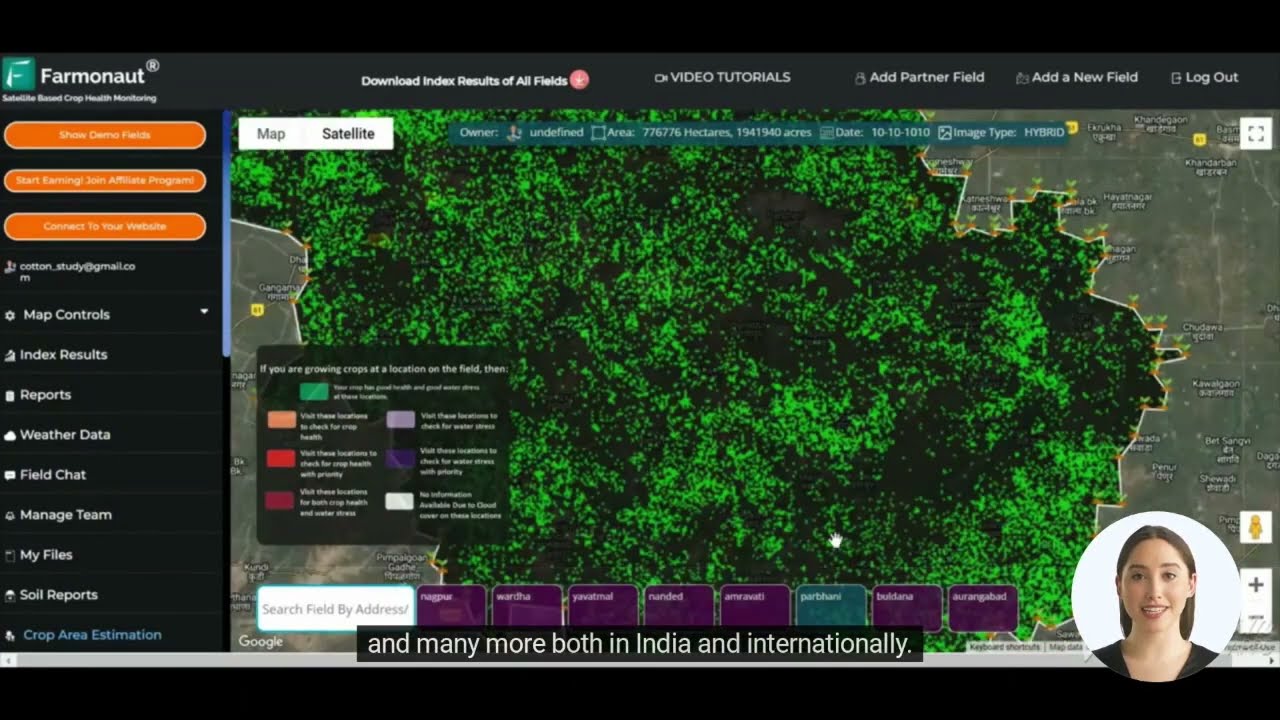Oklahoma’s Pesticide Debate: Balancing Farmer Rights and Public Health in State Environmental Policy
“Oklahoma’s pesticide debate involves balancing the interests of 77,300 farms covering 34.2 million acres with public health concerns.”
In recent weeks, Oklahoma has found itself at the center of a heated debate surrounding pesticide regulations and environmental protection policies. This controversial issue has sparked intense discussions about how to balance the rights of farmers and ranchers with the need to safeguard public health and the environment. As we delve into this complex topic, we’ll explore the various facets of the debate and its potential implications for Oklahoma’s agricultural sector and communities.
The Withdrawal of House Bill 1755
The catalyst for this ongoing dialogue was the recent withdrawal of House Bill 1755 by state Representative Dell Kerbs. This bill, which aimed to align Oklahoma’s pesticide regulations with federal Environmental Protection Agency (EPA) standards, quickly became a point of contention among various stakeholders. The decision to withdraw the bill came after careful consideration and extensive conversations with different groups, highlighting the complexity of the issue at hand.
Representative Kerbs stated, “It is important that we take the time to thoroughly evaluate all perspectives to ensure we are crafting policy that supports our farmers and ranchers while also protecting the interests and well-being of all Oklahomans.” This statement underscores the delicate balance that policymakers must strike when addressing agricultural regulations and environmental protection.

The Debate: Federal vs. State Authority
At the heart of this debate lies the question of whether Oklahoma should align its pesticide regulations with EPA standards or maintain its own set of rules. Proponents of the bill argued that aligning with federal standards would eliminate confusion and redundant warning requirements for farmers, businesses, and consumers. However, opponents raised concerns about ceding too much control to the federal government and potentially limiting local communities’ ability to implement stricter regulations if desired.
Liza Greve, director of Oklahomans for Health and Parental Rights, voiced opposition to the bill, stating, “If communities don’t want to use a certain herbicide or pesticide, they should have the right to ban that, or they should have the right to know when it’s going to be sprayed.” This sentiment reflects a broader concern about local autonomy and the ability of communities to make decisions about pesticide use that directly affect their residents.
The Role of the EPA in Pesticide Regulation
To better understand the implications of aligning state regulations with EPA standards, it’s essential to examine the role of the EPA in pesticide regulation. The EPA is responsible for evaluating and registering pesticides for use in the United States, ensuring that these products meet federal safety standards to protect human health and the environment.
“The EPA regulates over 1,000 pesticides, influencing state-level discussions on environmental policy and agricultural practices in Oklahoma.”
The EPA’s regulatory process includes:
- Evaluating potential risks to human health and the environment
- Establishing maximum residue limits for pesticides on food crops
- Setting guidelines for proper pesticide application and use
- Conducting ongoing reviews of registered pesticides
While the EPA sets federal standards, states have the authority to implement additional regulations that may be more stringent than federal requirements. This flexibility allows states to address specific local concerns or environmental conditions that may not be fully captured by federal guidelines.
The Impact on Oklahoma’s Agricultural Sector
Oklahoma’s agricultural sector plays a crucial role in the state’s economy, with thousands of farmers and ranchers relying on effective pest management strategies to protect their crops and livestock. The outcome of this pesticide debate could have significant implications for these agricultural producers.
Potential impacts on farmers and ranchers include:
- Changes in pesticide application practices
- Increased or decreased regulatory burden
- Shifts in crop protection strategies
- Potential economic effects on farm operations
As we navigate this complex issue, it’s crucial to consider the perspectives of agricultural stakeholders while also addressing public health concerns. Striking the right balance will be key to developing effective and fair pesticide regulations in Oklahoma.

Public Health and Environmental Concerns
While supporting the agricultural sector is crucial, it’s equally important to address the public health and environmental concerns associated with pesticide use. Many Oklahomans are worried about the potential long-term effects of pesticide exposure on human health and the environment.
Key concerns include:
- Potential groundwater contamination
- Impact on pollinators and beneficial insects
- Drift of pesticides to non-target areas
- Cumulative effects of long-term pesticide exposure
Addressing these concerns will be essential in developing a comprehensive and balanced approach to pesticide regulation in Oklahoma.
The Role of Technology in Modern Agriculture
As we consider the future of pesticide regulation in Oklahoma, it’s important to recognize the role that technology can play in supporting sustainable and efficient agricultural practices. Advanced farming technologies can help reduce the need for pesticides while improving crop yields and environmental stewardship.
One such technology that is revolutionizing the agricultural sector is satellite-based farm management, offered by companies like Farmonaut. These innovative solutions provide farmers with real-time insights into crop health, soil moisture levels, and other critical metrics, enabling more precise and targeted use of agricultural inputs, including pesticides.
By leveraging satellite imagery and artificial intelligence, farmers can:
- Monitor crop health in real-time
- Identify pest and disease outbreaks early
- Optimize irrigation and fertilizer application
- Reduce overall pesticide use through precision agriculture techniques
Incorporating these technologies into Oklahoma’s agricultural practices could help address some of the concerns raised in the pesticide debate by promoting more sustainable and efficient farming methods.
Comparing Oklahoma’s Approach to EPA Standards
To better understand the implications of aligning Oklahoma’s pesticide regulations with EPA standards, let’s examine a comparison of key aspects:
| Aspect | Oklahoma Current/Proposed Policy | EPA Standards |
|---|---|---|
| Pesticide Application Limits | Varies by county and pesticide type | Uniform national standards based on scientific risk assessments |
| Buffer Zone Requirements | Locally determined, may vary | Standardized based on pesticide type and application method |
| Reporting and Documentation | State-specific requirements | Federal guidelines with some flexibility for state implementation |
| Environmental Impact Assessments | Conducted on a case-by-case basis | Comprehensive assessments required for all new pesticide registrations |
| Farmer Rights and Flexibility | Greater local control and adaptability | Standardized approach with less local variation |
| Public Health Safeguards | May include additional state-specific protections | Baseline national standards for human health protection |
| Enforcement Mechanisms | State-led enforcement with local partnerships | Federal oversight with state-level implementation |
This comparison highlights the potential trade-offs between maintaining state-specific regulations and adopting federal standards. While EPA standards offer uniformity and comprehensive scientific backing, Oklahoma’s current approach may provide more flexibility to address local concerns and conditions.
The Importance of Community Input
As the debate over pesticide regulations continues, it’s crucial to ensure that all stakeholders have a voice in the decision-making process. Community input is essential for developing policies that truly reflect the needs and concerns of Oklahomans.
Ways to encourage community involvement include:
- Holding public forums and town hall meetings
- Conducting surveys to gather public opinion
- Establishing advisory committees with diverse representation
- Providing educational resources on pesticide use and regulation
By fostering open dialogue and collaboration, policymakers can work towards a solution that balances the interests of farmers, environmental advocates, and the general public.
The Role of Innovation in Sustainable Agriculture
As we consider the future of pesticide regulation in Oklahoma, it’s important to recognize the potential of innovative agricultural technologies to address some of the concerns raised in this debate. Advanced farming solutions, such as those offered by Farmonaut, can play a crucial role in promoting sustainable agriculture while reducing reliance on pesticides.
Some key benefits of these technologies include:
- Precision application of agricultural inputs, including pesticides
- Early detection of pest and disease outbreaks
- Improved crop yield forecasting
- Enhanced resource management and sustainability
By incorporating these innovative solutions, Oklahoma farmers can potentially reduce their pesticide use while maintaining or even improving crop yields. This approach could help address both environmental concerns and the economic needs of the agricultural sector.
The Potential for Compromise
As Oklahoma navigates this complex issue, there may be opportunities for compromise that address the concerns of various stakeholders. Potential solutions could include:
- Adopting a hybrid approach that combines EPA standards with state-specific provisions
- Implementing a phased transition to new regulations
- Establishing a task force to continually review and update pesticide policies
- Developing incentive programs for farmers who adopt sustainable pest management practices
By exploring these and other creative solutions, Oklahoma may be able to craft a pesticide policy that supports its agricultural sector while protecting public health and the environment.
The Broader Context: Climate Change and Agricultural Resilience
As we discuss pesticide regulations, it’s important to consider the broader context of climate change and its impact on agriculture. Oklahoma, like many other states, faces increasing challenges from extreme weather events, changing precipitation patterns, and rising temperatures. These factors can influence pest populations and the effectiveness of pesticides, making it crucial to develop adaptive and resilient agricultural practices.
Climate-related considerations in pesticide policy include:
- Anticipating shifts in pest pressures due to changing climate conditions
- Promoting integrated pest management strategies
- Encouraging the development and use of climate-resilient crop varieties
- Supporting research into sustainable pest control methods
By addressing these factors in pesticide regulations, Oklahoma can help ensure that its agricultural sector is well-prepared to face future challenges while minimizing environmental impacts.
The Economic Implications of Pesticide Policy
The outcome of Oklahoma’s pesticide debate could have significant economic implications for the state. While protecting public health and the environment is paramount, it’s also important to consider the potential economic impacts of any regulatory changes on farmers, agricultural businesses, and related industries.
Potential economic considerations include:
- Costs associated with implementing new regulations
- Potential changes in crop yields and quality
- Impact on agricultural exports and competitiveness
- Opportunities for innovation in sustainable agriculture
Balancing these economic factors with environmental and health concerns will be crucial in developing a pesticide policy that supports Oklahoma’s long-term prosperity.
The Role of Education and Outreach
Regardless of the ultimate outcome of the pesticide debate, education and outreach will play a crucial role in ensuring the successful implementation of any new policies. Farmers, agricultural workers, and the general public all need access to accurate information about pesticide use, safety, and regulations.
Key components of an effective education and outreach program could include:
- Training programs for farmers and pesticide applicators
- Public awareness campaigns about pesticide safety and environmental impacts
- Collaboration with agricultural extension services to disseminate information
- Development of easy-to-use resources for understanding and complying with regulations
By prioritizing education and outreach, Oklahoma can help ensure that any changes to pesticide policy are well-understood and effectively implemented across the state.
Looking to the Future: Sustainable Agriculture in Oklahoma
As we navigate the complexities of the pesticide debate, it’s important to keep sight of the larger goal: creating a sustainable and resilient agricultural sector in Oklahoma. This debate presents an opportunity to re-evaluate current practices and explore innovative solutions that can benefit farmers, communities, and the environment.
Some key areas for future focus include:
- Investing in research and development of sustainable pest management techniques
- Promoting the adoption of precision agriculture technologies
- Encouraging biodiversity and natural pest control methods
- Supporting the transition to organic and regenerative farming practices where feasible
By embracing these forward-thinking approaches, Oklahoma can position itself as a leader in sustainable agriculture while addressing the concerns raised in the current pesticide debate.
Conclusion: A Path Forward for Oklahoma
The withdrawal of House Bill 1755 has opened up an important dialogue about the future of pesticide regulation in Oklahoma. As we’ve explored in this article, the issue is complex, involving a delicate balance between supporting farmers, protecting public health, and preserving the environment.
Moving forward, it will be crucial for all stakeholders to engage in open and constructive dialogue. By considering diverse perspectives, embracing innovative technologies, and prioritizing both economic and environmental sustainability, Oklahoma has the opportunity to develop a pesticide policy that truly serves the best interests of all its citizens.
As this debate continues to unfold, we encourage all Oklahomans to stay informed and engaged in the process. The decisions made in the coming months and years will have lasting impacts on the state’s agricultural sector, public health, and environmental quality. By working together, we can find a path forward that ensures a prosperous and sustainable future for Oklahoma.
FAQ Section
Q: What was House Bill 1755, and why was it withdrawn?
A: House Bill 1755 was proposed legislation aimed at aligning Oklahoma’s pesticide regulations with EPA standards. It was withdrawn by state Rep. Dell Kerbs after careful consideration and extensive conversations with various groups to allow for further evaluation of all perspectives.
Q: How do EPA pesticide standards differ from Oklahoma’s current regulations?
A: EPA standards provide uniform national guidelines based on scientific risk assessments, while Oklahoma’s current regulations may include state-specific requirements and allow for more local control. The exact differences vary depending on the specific aspect of pesticide regulation.
Q: What are the main concerns of those opposing alignment with EPA standards?
A: Main concerns include potential loss of local control over pesticide use, the ability of communities to implement stricter regulations if desired, and the right to know when pesticides will be sprayed in their area.
Q: How might changes in pesticide regulations affect Oklahoma farmers?
A: Changes could impact pesticide application practices, regulatory burdens, crop protection strategies, and potentially the economic aspects of farm operations. The exact effects would depend on the specific changes implemented.
Q: What role can technology play in addressing pesticide concerns?
A: Advanced technologies, such as satellite-based farm management systems, can help optimize pesticide use, improve crop monitoring, and support more sustainable farming practices. These tools can potentially reduce overall pesticide use while maintaining or improving crop yields.
Q: How can Oklahomans stay informed and involved in this ongoing debate?
A: Oklahomans can stay informed by following local news coverage, attending public forums or town hall meetings, and engaging with their local representatives. They can also participate in surveys or join advisory committees if such opportunities are available.
Explore Innovative Agricultural Solutions with Farmonaut
As we navigate the complexities of pesticide regulation and sustainable agriculture, innovative technologies can play a crucial role in finding balanced solutions. Farmonaut offers advanced, satellite-based farm management solutions that can help farmers optimize their operations, reduce pesticide use, and improve overall sustainability.
Explore Farmonaut’s offerings:
For developers interested in integrating Farmonaut’s technology into their own solutions, check out our API and API Developer Docs.
Earn With Farmonaut: Affiliate Program
Earn 20% recurring commission with Farmonaut’s affiliate program by sharing your promo code and helping farmers save 10%. Onboard 10 Elite farmers monthly to earn a minimum of $148,000 annually—start now and grow your income!
Farmonaut Subscriptions




















